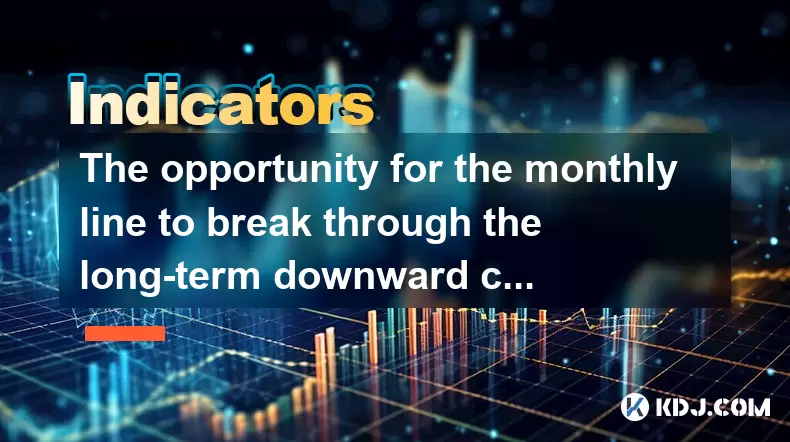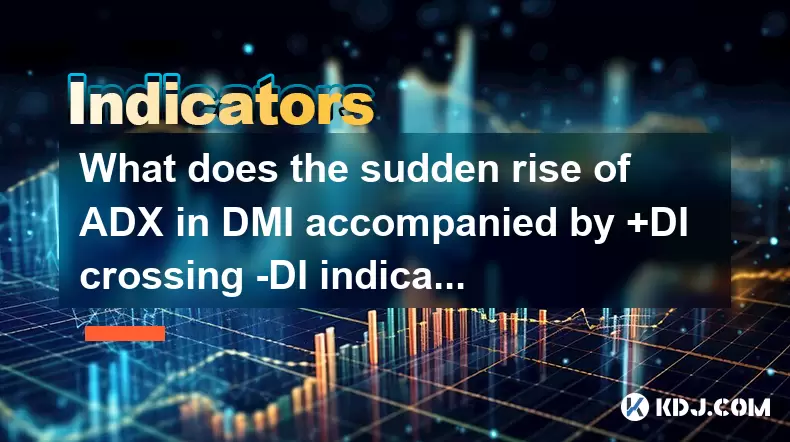-
 Bitcoin
Bitcoin $117400
1.93% -
 Ethereum
Ethereum $3747
3.63% -
 XRP
XRP $3.157
3.09% -
 Tether USDt
Tether USDt $1.000
0.02% -
 BNB
BNB $783.3
3.19% -
 Solana
Solana $186.6
5.64% -
 USDC
USDC $0.9999
0.01% -
 Dogecoin
Dogecoin $0.2375
5.42% -
 TRON
TRON $0.3185
1.32% -
 Cardano
Cardano $0.8191
3.28% -
 Hyperliquid
Hyperliquid $44.43
5.76% -
 Sui
Sui $3.995
9.84% -
 Stellar
Stellar $0.4396
6.27% -
 Chainlink
Chainlink $18.26
4.83% -
 Hedera
Hedera $0.2646
11.88% -
 Bitcoin Cash
Bitcoin Cash $553.5
5.55% -
 Avalanche
Avalanche $24.13
4.73% -
 Litecoin
Litecoin $113.3
1.77% -
 UNUS SED LEO
UNUS SED LEO $8.975
0.11% -
 Shiba Inu
Shiba Inu $0.00001405
5.69% -
 Toncoin
Toncoin $3.319
7.46% -
 Ethena USDe
Ethena USDe $1.001
0.02% -
 Uniswap
Uniswap $10.44
4.98% -
 Polkadot
Polkadot $4.098
4.31% -
 Monero
Monero $328.6
1.87% -
 Dai
Dai $1.000
0.01% -
 Bitget Token
Bitget Token $4.561
2.76% -
 Pepe
Pepe $0.00001261
5.29% -
 Aave
Aave $296.8
4.02% -
 Cronos
Cronos $0.1335
3.28%
The opportunity for the monthly line to break through the long-term downward channel and the daily line shrinks and steps back
A monthly breakout above a long-term downward channel signals a potential bullish reversal, especially when confirmed by volume, on-chain accumulation, and sustained closes.
Jul 26, 2025 at 01:19 am

Understanding the Long-Term Downward Channel in Cryptocurrency Charts
In cryptocurrency technical analysis, a long-term downward channel is formed by drawing two parallel trendlines: one connecting the lower highs and another connecting the lower lows. This structure indicates a sustained bearish sentiment over months or even years. When traders observe the monthly line approaching the upper boundary of this channel, it signals a potential shift in market dynamics. A breakout above this upper resistance line suggests that buying pressure may be overpowering prolonged selling pressure. The significance of a monthly timeframe breakout cannot be overstated, as it reflects long-term investor behavior and institutional participation. Such a move often coincides with macroeconomic shifts, halving events, or major regulatory developments in the crypto space.
Monthly Line Breakout: What It Means for Market Structure
A breakout of the monthly line from a long-term downward channel implies a structural change in price behavior. For this to be valid, the close of the monthly candle must be clearly above the upper trendline, not just a wick or intramonth spike. Confirmation typically requires volume analysis — rising trading volume during the breakout strengthens its legitimacy. Traders should watch for candlestick patterns such as bullish engulfing or hammer formations at the breakout point. If the price sustains above the channel for two consecutive months, the bearish bias is considered broken. This shift may trigger algorithmic trading systems and institutional rebalancing, leading to sustained upward momentum. It’s crucial to distinguish between a false breakout and a genuine one by monitoring follow-through price action and on-chain metrics like exchange outflows.
Daily Line Contraction and Its Implications
While the monthly chart shows a potential breakout, the daily line shrinking and stepping back indicates short-term consolidation. This contraction often appears as a series of lower volatility candles, forming patterns like symmetrical triangles or coils. The shrinking daily range suggests that market participants are in a state of indecision, waiting for a directional cue from higher timeframes. During this phase, trading volume typically diminishes, reflecting reduced selling pressure but also limited aggressive buying. This stepping back action allows the market to reset after a rally, preventing overextension. Traders should monitor key support levels during this consolidation, as a bounce from these zones can confirm bullish continuation.
How to Identify a Valid Monthly Breakout: Step-by-Step Guide
- Confirm that the upper trendline of the downward channel has been consistently tested and held over at least three touchpoints across 12–24 months
- Ensure the monthly candle closes above the trendline, not just piercing it intra-month
- Check on-chain volume and exchange flow data to verify accumulation — look for declining exchange balances and rising wallet holdings
- Analyze derivatives data such as futures open interest and funding rates; a rise in long positions with neutral funding suggests healthy bullish sentiment
- Cross-verify with macro indicators like Bitcoin dominance, stablecoin supply ratio, and hash rate trends to rule out speculative noise
This multi-layered verification process helps filter out false signals and aligns technical structure with fundamental on-chain health.
Trading Strategy During Daily Consolidation Post-Breakout
When the daily line steps back after a monthly breakout, it presents a strategic entry opportunity. Traders can use this phase to build positions with tighter risk parameters. A common approach is to place buy limit orders near the consolidation support zone, defined by recent swing lows or moving averages like the 50-day or 200-day EMA. Stop-loss orders should be set just below this support to minimize risk. Take-profit targets can be projected using the measured move method — the height of the prior downward channel added to the breakout point. Using trailing stops on a daily basis helps lock in gains if the trend resumes. It’s also wise to scale in gradually, allocating only a portion of capital initially and adding on confirmed bullish closes.
Monitoring Key Indicators During the Transition Phase
During the shift from a long-term downtrend to potential uptrend, certain indicators provide early warnings or confirmations. The Relative Strength Index (RSI) on the monthly chart should move above 50, indicating momentum shift. On the daily chart, Bollinger Band® width contraction reflects the shrinking volatility, and a subsequent expansion could signal the next leg up. The Ichimoku Cloud can offer dynamic support — if the price remains above the cloud on both daily and weekly charts, the bullish case strengthens. On-chain metrics such as MVRV (Market Value to Realized Value) ratio turning positive also support a structural bottom. These tools, when used in conjunction, reduce reliance on any single signal and improve decision accuracy.
Frequently Asked Questions
What is the difference between a monthly breakout and a daily breakout in crypto trading?
A monthly breakout reflects a fundamental shift in long-term market structure and is less prone to manipulation. It involves broader market participation and often aligns with macro cycles. A daily breakout, while useful for short-term trades, can be false or reversed quickly due to noise, leverage liquidations, or whale spoofing.
How can I confirm that the shrinking daily line is not the start of a reversal?
Monitor volume trends — if volume decreases during the contraction and price holds above key moving averages, it’s likely consolidation. A reversal would typically show increasing volume on down moves and breaks below major support levels with strong bearish candles.
Should I trade the breakout immediately or wait for confirmation?
It is safer to wait for confirmation candles — at least one full monthly close above the channel and a daily close above the consolidation range. Entering too early risks catching a fakeout, especially in volatile crypto markets.
Can on-chain data help predict the sustainability of a monthly breakout?
Yes. Metrics like NUPL (Net Unrealized Profit/Loss) moving from extreme fear to neutral, long-term holder accumulation, and declining exchange reserves all support sustainable breakouts. These indicate that strong hands are absorbing supply, reducing the likelihood of a swift reversal.
Disclaimer:info@kdj.com
The information provided is not trading advice. kdj.com does not assume any responsibility for any investments made based on the information provided in this article. Cryptocurrencies are highly volatile and it is highly recommended that you invest with caution after thorough research!
If you believe that the content used on this website infringes your copyright, please contact us immediately (info@kdj.com) and we will delete it promptly.
- Wall Street's Bitcoin Bonanza: ETF Filings Signal Crypto's Coming-Out Party
- 2025-07-26 15:10:12
- Bitcoin, Cynthia Lummis, and Freedom Money: A New York Perspective
- 2025-07-26 15:10:12
- UK Tech, Bitcoin, and Investment: Decoding the Latest Trends
- 2025-07-26 15:30:11
- UK Crypto Regulation: Will Bitcoin Access Open Up for Retail Investors?
- 2025-07-26 15:30:11
- ChatGPT, Binance Coin, Price Prediction: BNB's Bullish Outlook in 2025?
- 2025-07-26 15:35:12
- Citigroup's Bitcoin Forecast: $135K by 2025 – Are They Right?
- 2025-07-26 15:35:12
Related knowledge

What does it mean that the rebound is blocked after the moving average is arranged in a short position for the first time?
Jul 26,2025 at 10:51am
Understanding the Short-Term Moving Average ConfigurationWhen traders refer to a 'short position arrangement' in moving averages, they are describing ...

What does it mean when the price rises along the 5-day moving average for five consecutive days?
Jul 26,2025 at 08:07am
Understanding the 5-Day Moving Average in Cryptocurrency TradingThe 5-day moving average (5DMA) is a widely used technical indicator in cryptocurrency...

What does it mean when the price breaks through the 60-day moving average with a large volume but shrinks the next day?
Jul 26,2025 at 06:01am
Understanding the 60-Day Moving Average in Cryptocurrency TradingThe 60-day moving average (60DMA) is a widely used technical indicator in the cryptoc...

What does the sudden rise of ADX in DMI accompanied by +DI crossing -DI indicate?
Jul 26,2025 at 01:21pm
Understanding the DMI and Its Core ComponentsThe Directional Movement Index (DMI) is a technical analysis tool used to determine the presence and stre...

What does it mean when OBV continues to hit new highs but the price is stagnant?
Jul 26,2025 at 09:57am
Understanding the On-Balance Volume (OBV) IndicatorThe On-Balance Volume (OBV) is a technical analysis indicator that uses volume flow to predict chan...

What does the golden cross of EMA12 and EMA26 but the low trading volume reflect?
Jul 26,2025 at 06:44am
Understanding the Golden Cross in EMA12 and EMA26The golden cross is a widely recognized technical indicator in the cryptocurrency market, signaling a...

What does it mean that the rebound is blocked after the moving average is arranged in a short position for the first time?
Jul 26,2025 at 10:51am
Understanding the Short-Term Moving Average ConfigurationWhen traders refer to a 'short position arrangement' in moving averages, they are describing ...

What does it mean when the price rises along the 5-day moving average for five consecutive days?
Jul 26,2025 at 08:07am
Understanding the 5-Day Moving Average in Cryptocurrency TradingThe 5-day moving average (5DMA) is a widely used technical indicator in cryptocurrency...

What does it mean when the price breaks through the 60-day moving average with a large volume but shrinks the next day?
Jul 26,2025 at 06:01am
Understanding the 60-Day Moving Average in Cryptocurrency TradingThe 60-day moving average (60DMA) is a widely used technical indicator in the cryptoc...

What does the sudden rise of ADX in DMI accompanied by +DI crossing -DI indicate?
Jul 26,2025 at 01:21pm
Understanding the DMI and Its Core ComponentsThe Directional Movement Index (DMI) is a technical analysis tool used to determine the presence and stre...

What does it mean when OBV continues to hit new highs but the price is stagnant?
Jul 26,2025 at 09:57am
Understanding the On-Balance Volume (OBV) IndicatorThe On-Balance Volume (OBV) is a technical analysis indicator that uses volume flow to predict chan...

What does the golden cross of EMA12 and EMA26 but the low trading volume reflect?
Jul 26,2025 at 06:44am
Understanding the Golden Cross in EMA12 and EMA26The golden cross is a widely recognized technical indicator in the cryptocurrency market, signaling a...
See all articles

























































































